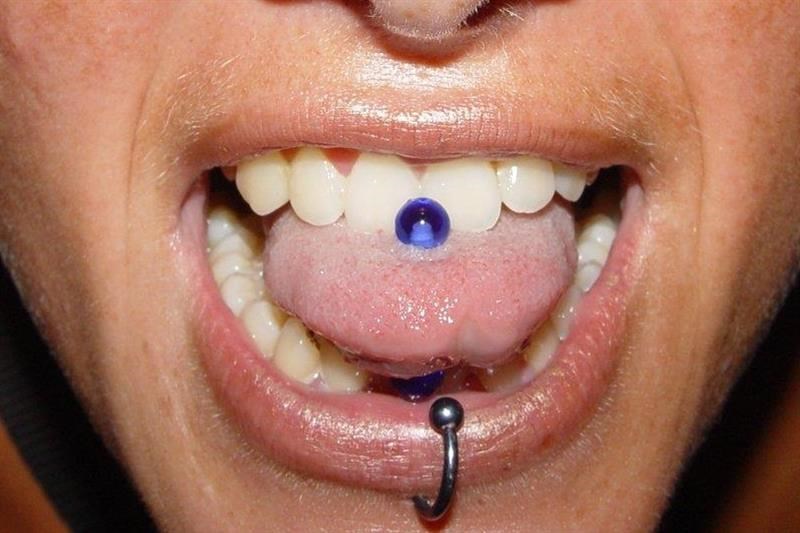More awareness needed about risks of oral piercings
Published: 25/06/2018
Tongue piercings may affect gums and teeth in close proximity with the piercing.
That's according to a study presented at EuroPerio9 last week.
For this study, 18 patients (14 female) with a tongue and/or lip piercing from our database of more than 1400 patients treated in our service were included. The mean age of this population was 28,3 + 7.7 years. Three out of 18 patients wore both, i.e. a total of 14 tongue piercings and 7 lip piercings were assessed. Clinical parameters and the maximum wearing time of the lip and/or tongue piercing were recorded. Periodontal findings in teeth close to the piercing were compared to teeth not affected by the piercing.
In a retrospective study, an association between oral piercings and increased periodontal inflammation was found, as evident by increased bleeding on probing and increased probing depth and/or attachment loss.
The closer teeth were to a tongue piercing, the more affected they were, according to Dr Clemens Walter, Department of Periodontology, Endodontology and Cariology, University of Basel, Basel, Switzerland.
He said: 'The patient was periodontally healthy with the exception of the lower incisor teeth. We could not identify any known risk factors. The patient had a tongue piercing. Non-surgical and advanced surgical treatment was performed and was not successful. The patient lost teeth.
'Acknowledging the growing data from all over the world, we now try to create awareness about the consequences of piercings for oral health and we counsel our patients to remove piercings in order to decrease the risk for dental and periodontal complications.'
Another abstract (2) presented at EuroPerio9 about two case studies by Dr Bernard Loir, from Brussels, Belgium, also found that for two young (27 and 32 years) female patients, repeated gum damage due tochronic pressure of the metal against teeth and gums during tongue movements when speaking, eating or swallowing, was associated with gum bleeding and infection causing deep lingual infrabony lesions and periodontitis.
Tongue piercings were used for 8 to 10 years and finally removed after abscesses, teeth mobility and migration.
'The lesions were localized on the lower incisor’s lingual side, close to a tongue piercing (the most frequent oral localisation of these devices followed by the lip). Periodontal complications occurred in a location hardly visible for the patient and as these teeth have very short roots, tooth mobility and tooth loss in the aesthetic area may be quickly encountered, an uncomfortable situation for such young and mostly female patients,' explained Dr Loir. 'For both patients, time consuming and costly surgical treatment and antibiotics were needed and complete regeneration of the lost tissue could not be achieved.'
Dr Loir warned: 'Young patients with oral piercings should be made aware of the local and global health risks they take by wearing these useless devices, especially if they compound the risk by smoking and a lack of proper dental hygiene. Piercings interfere daily with chewing, swallowing and speaking and the rate of complications is very high in available literature. Early complication is usually infection due to lack of hygiene in the piercing saloon or when done by the patients themselves with non-sterile material. Bleeding and swelling of the tongue is also very common and may represent a danger for a patient with cardiovascular disease but late complications also occur, such as swallowing the jewellery, teeth chipping and gum recession with lip piercings. Other complications occur in a more silent mode, such as lingual gum recession and bone loss, causing tooth mobility, migration and loss. Other life threatening diseases such as viral contamination (hepatitis, papilloma virus) endocarditis, and cerebral abscesses have also been registered.
'While awareness with respect to oral complications associated with piercings seems to be slowly increasing, there is yet much to be done. We are continuing with our research and hope to recruit more patients in order to increase our data base.'
Author: Julie Bissett











.jpg?width=150&height=100&scale=canvas)

